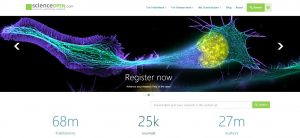
Buscando Contratos no Portal de Periódicos da CAPES
Como é de conhecimento geral, o acesso a bases de dados, periódicos ou e-books pode ser feito por meio do Portal de Periódicos da Capes https://www.periodicos.capes.gov.br , desde que a instituição mantenha ao menos um Programa de Pós-Graduação ativo.
Como a Capes não contrata todos os conteúdos do mundo, a Universidade de São Paulo, bem como as demais universidades estaduais paulistas como a Unicamp e a Unesp, busca investir recursos financeiros (sempre que possível) para propiciar aos seus usuários o acesso a conteúdos que faltam, ou seja, que a Capes não assina mas que a comunidade local considera prioritários.
Entretanto, pode acontecer também da Capes parar de assinar algum conteúdo de uma hora para outra.
Aí, o usuário percebe que não consegue mais acessar os textos completos que antes conseguia…”Perdi o acesso à revista! Por que !?”
De repente, o que estava acessível não está mais…O que fazer?
Como saber se ocorreu apenas uma falha momentânea, se uma Base de Dados ou uma Coleção de Revistas ainda é assinada e deveria estar disponível pelo Portal de Periódicos da CAPES?
Além da necessidade de acessar o Portal de Revistas da Capes a partir de um computador com endereço de IP reconhecido pela própria Capes ou de acessar via Rede CAFe com suas credenciais institucionais, nesses casos é importante verificar como estão os Contratos da Capes com os fornecedores de conteúdos.
Aqui vão algumas dicas para docentes, discentes e bibliotecários!

Acesse o site do Portal de Periódicos da Capes: https://www.periodicos.capes.gov.br
Em seguida, clique no item ‘Sobre“. Clique na imagem para melhor visualização.
Ao clicar, abre-se o Menu geral. Clique no item ‘Contratos‘
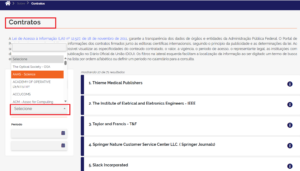 Então, surgirá a tela apresentada ao lado, cujo título é ‘Contratos‘.
Então, surgirá a tela apresentada ao lado, cujo título é ‘Contratos‘.
Nessa tela, há a opção de buscar contratos por palavra-chave, por editor ou período.
Uma lista de nomes de editores facilita a busca e, dessa forma, é possível verificar quais recursos estão em processo de contratação.
Clique na imagem para melhor visualização.
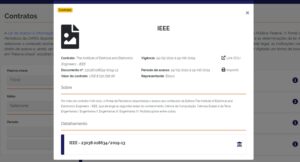 Ao clicar no nome do editor, é fornecida a informação do andamento do Contrato, se está vigente ou vencido, o que indica que está em processo de análise, etc.
Ao clicar no nome do editor, é fornecida a informação do andamento do Contrato, se está vigente ou vencido, o que indica que está em processo de análise, etc.
Tratativas e negociações entre a Capes e os fornecedores de conteúdo devem estar em andamento.
Assim, é só aguardar pois é bastante provável que o Contrato seja restabelecido.
Clique na imagem para melhor visualização.
Caso não haja nenhuma informação disponível sobre o contrato com algum editor ou recurso, orientamos entrar em contato direto com a equipe do Portal de Periódicos da Capes, para saber se o acesso àquele recurso foi cancelado, ou se há previsão de nova contratação.
Envie uma mensagem diretamente para o e-mail AcessoPeriodicos@capes.gov.br solicitando mais informações.












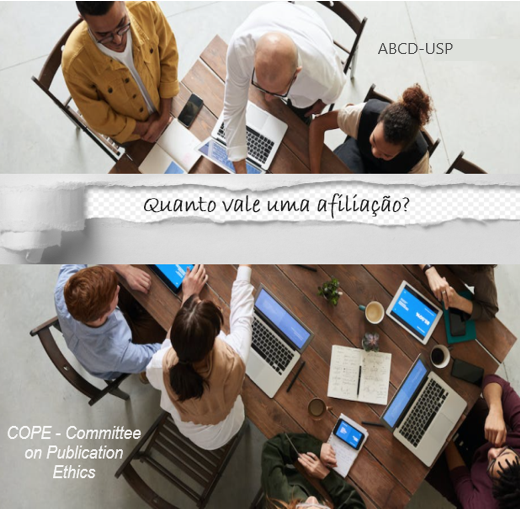

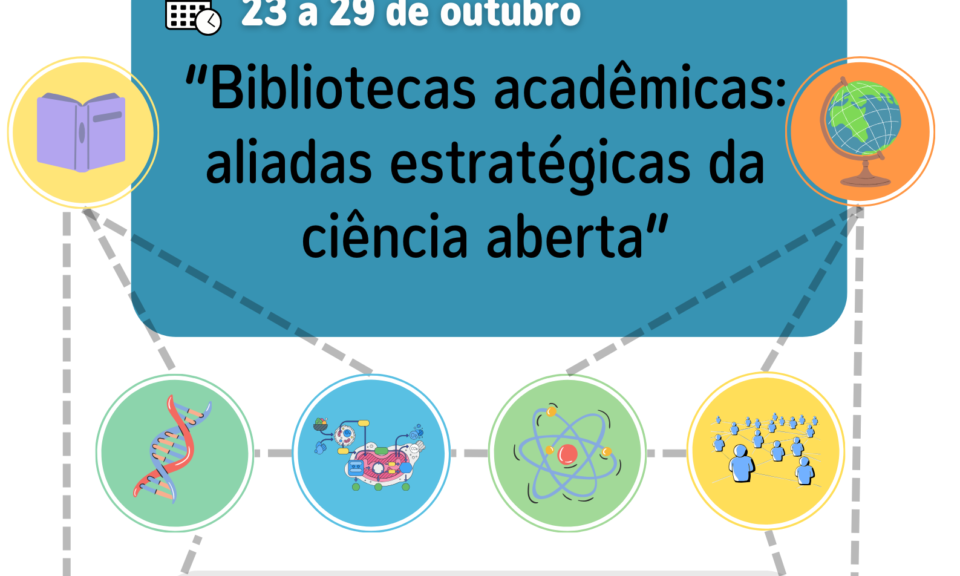
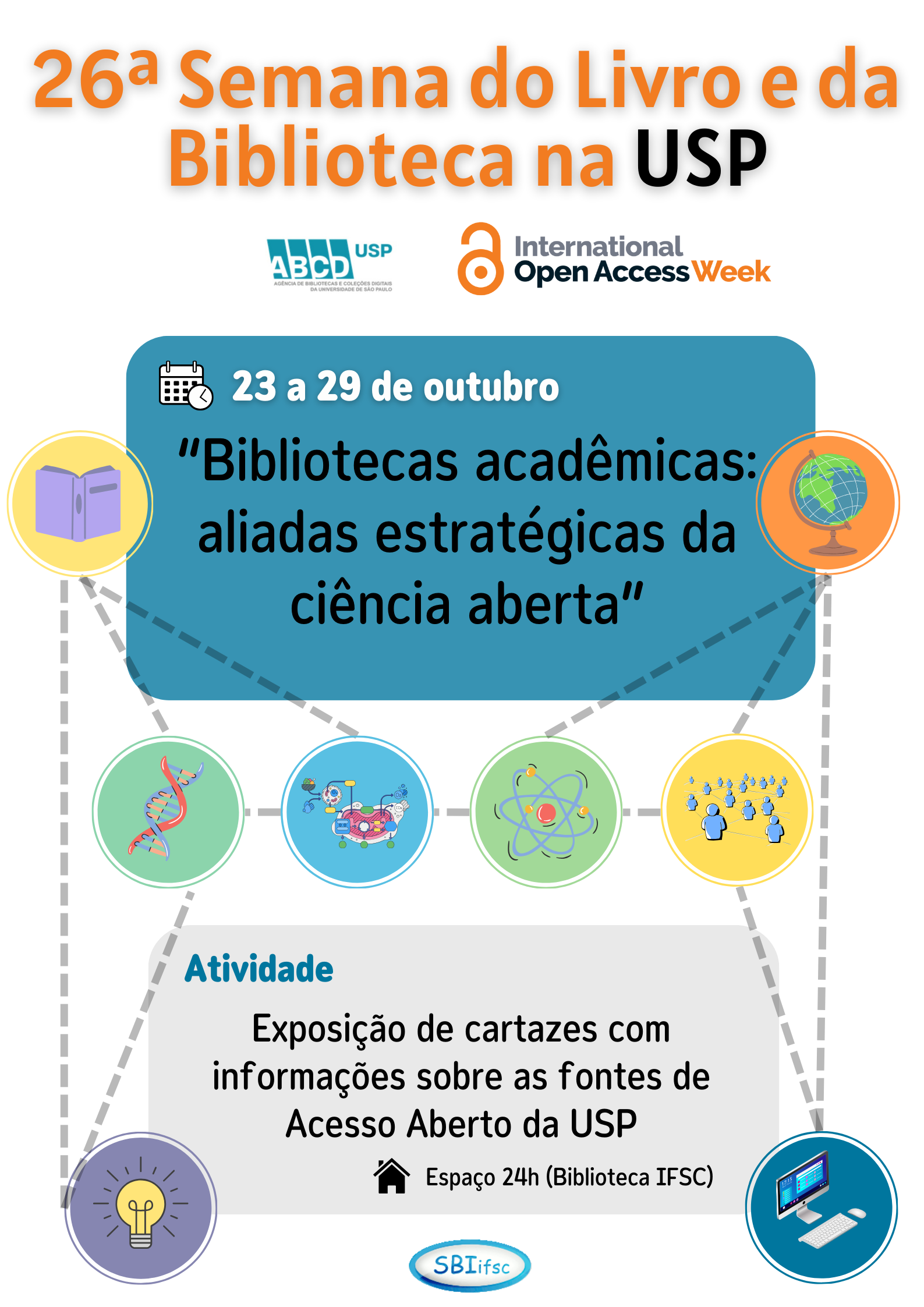



 O compartilhamento de dados pode ser valioso por diversas razões. Ele permite a replicação de análises e resultados, estimula outras pesquisas a partir de dados pré-existentes, melhora os métodos de coleta de dados por meio da averiguação de outros e incentiva amplamente perspectivas alternativas que podem promover uma diversidade de análises e conclusões. Além disso, o compartilhamento de dados de pesquisa contribui para o conhecimento da sociedade e pode evitar a duplicidade dos esforços de coleta de dados por outros pesquisadores, permitindo que trabalhem com dados pré-existentes. Particularmente durante a pandemia COVID-19, quando o corpo docente
O compartilhamento de dados pode ser valioso por diversas razões. Ele permite a replicação de análises e resultados, estimula outras pesquisas a partir de dados pré-existentes, melhora os métodos de coleta de dados por meio da averiguação de outros e incentiva amplamente perspectivas alternativas que podem promover uma diversidade de análises e conclusões. Além disso, o compartilhamento de dados de pesquisa contribui para o conhecimento da sociedade e pode evitar a duplicidade dos esforços de coleta de dados por outros pesquisadores, permitindo que trabalhem com dados pré-existentes. Particularmente durante a pandemia COVID-19, quando o corpo docente 
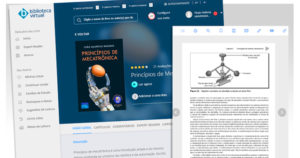 Convênio com a Biblioteca Virtual Pearson possibilita que estudantes, professores e funcionários da Universidade leiam gratuitamente livros de 45 editoras brasileiras.
Convênio com a Biblioteca Virtual Pearson possibilita que estudantes, professores e funcionários da Universidade leiam gratuitamente livros de 45 editoras brasileiras.
 De acordo com o Relatório
De acordo com o Relatório 


